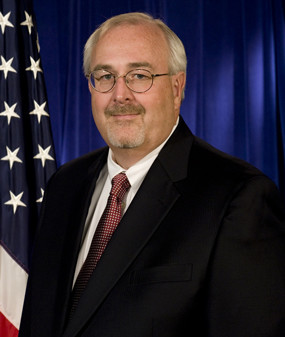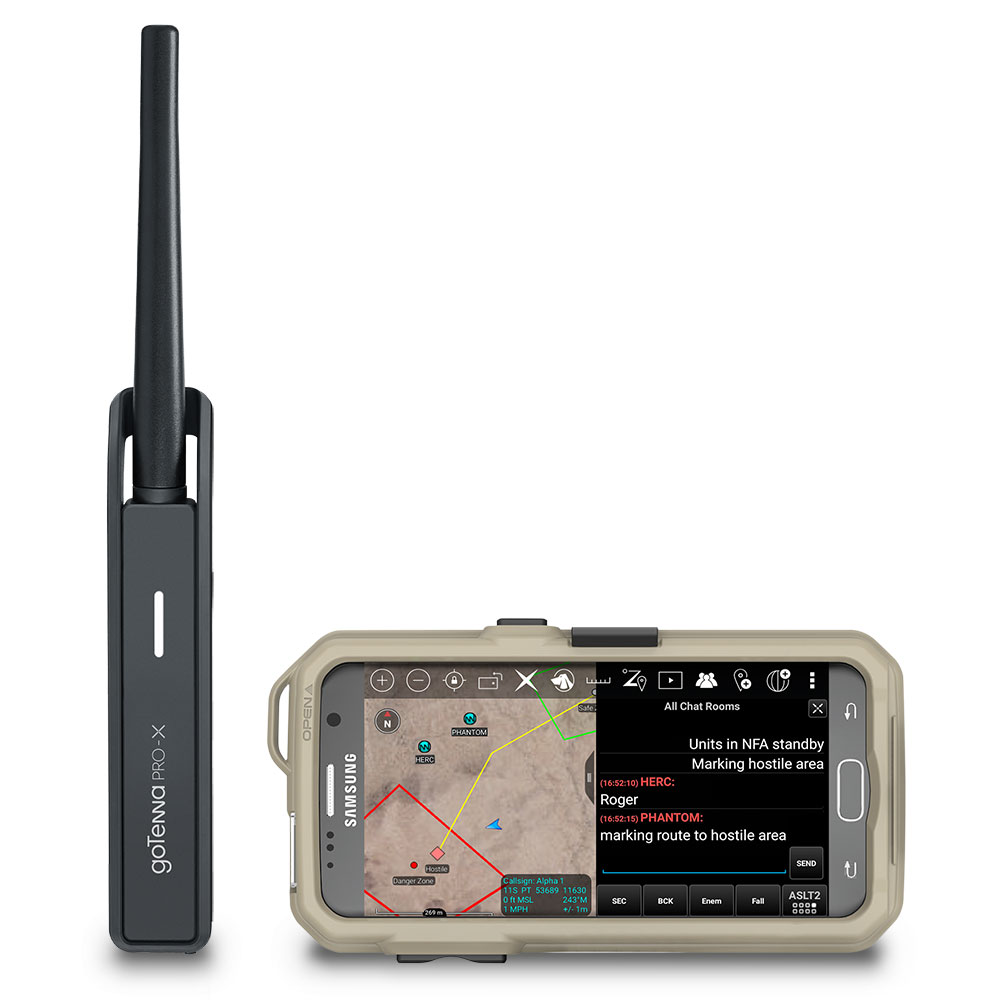How to prepare our communications for the next natural disaster

Our computers and cellphones are an increasingly huge part of how we work, socialize and even organize protests. In a natural disaster, those communication tools become even more important but often less reliable. That’s particularly an issue for first responders, who are soon going to have to start dealing with this year’s inevitable hurricanes and wildfires. With many government agencies already maxed out by their response to COVID-19, this year could be especially tough.
There are expensive and complicated solutions, like specialized radios. But “mesh networks” could be a simpler way to communicate without cellphone service, according to Craig Fugate, who served as head of the Federal Emergency Management Agency during the Obama administration and now consults for goTenna, one of the companies working on this tech. These small, device-to-device networks can be more resilient for local communications. The following is an edited transcript of our conversation.

Craig Fugate: They can actually go from router to router and never have to go back to the internet, and that’s this idea of a mesh network —you don’t have to be connected to the big internet. That ability to use your cellphone inside of that closed network offers a lot of interesting advantages. One, if you’re dealing with personally identifiable information or sensitive information, you’re not having to go through the internet. It’s only for those people that are on the mesh. You can password-protect it and keep that information separate. And because you’re using your cellphone, there’s a lot of different types of things you could do as far as being able to track people so that you could build a map and you could actually have each phone giving us updated locations. It connects among itself, which is a real advantage when you’re dealing with disaster environments or when you’re trying to keep a closed network.
Jack Stewart: If you’re making your own little bubble of connectivity like that, though, your own mesh amongst a certain number of people, and you don’t have that link to the greater backbone of the internet, does that mean you can’t access any of that type of information? You can’t do a web search, for example. You just have to rely on the people in your bubble.
Fugate: That’s the trade-off, but this would be, again, if you did have the internet, you could actually reach out and connect to it, but in a disaster environment, or environments where we’re seeing [communication blocked] either because of the demand or lack of connectivity, you can still do good work with the mesh networks. [In] a lot of these instances, it’s either because we’re dealing with a capacity issue, it’s a remote issue or we have a failure secondary to the event, but the mesh network can operate in any of those environments.
Stewart: Say later this year — and unfortunately, I think it’s probably a relatively realistic prospect — we have a hurricane or a wildfire [and] the cell network goes down, but people want to communicate within their groups but stay socially distant because of COVID-19. It’s quite a difficult circumstance. What sort of equipment would they need to make a mesh network work?
Fugate: They could go the route that amateur radio and other DIY groups have and take old routers, repurpose them, put them on batteries and hook them up. It’s a little bit of a challenge to do that — it’s not what I would call consumer-friendly, but people are doing it. There are applications out there. One is goTenna Pro, which is a portable mesh network that’s basically consumer-grade. It was developed initially for response operations, the military, but the ability is that they basically have built a battery-powered, self-contained unit that anybody that can see that can get permission. You can select who could get into that network, can get on that mesh. You can do it yourself, or you can go to commercial products.
Stewart: We’re seeing people like Elon Musk’s SpaceX launch these constellations of satellites for communication. Would something like that not be more effective with a greater coverage area?
Fugate: In the future, perhaps, but again, it goes back to will your phone be able to see that network? And if not, well, you have to have another device. If you look at today, these are applications we have now. I think of this from the standpoint of always looking at how to get more bandwidth, how to improve communications, how to build interoperability, but the one interoperability solution the public has is their cellphone and Wi-Fi access if we lose the cellular networks.

Related links: More insight from Jack Stewart
Craig Fugate’s recent white paper argues that communications will be the next challenge of the COVID-19 pandemic. Because, of course, the disease doesn’t care what else is going on in the world, including any other natural disasters.
TechCrunch has a look at how goTenna’s equipment was useful for getting Puerto Rico back online after hurricanes there. A local official said 93% of telecommunications were downed in 2017, and it wasn’t just a case of hooking up generators to individual cell towers — not that generators or fuel were easy to get hold of. Even if a cell tower was powered up, there was no backbone network for it to connect to, so no link to the wider world. Mesh networks meant that at least people could text each other.
Another possible use for mesh networks is for privacy, when people don’t want to be reliant on the cell networks and the tracking that happens each time your phone pings a cell tower. Fugate told me that a communications bubble for a limited number of people could be useful at protests. Cell networks sometimes get overwhelmed where there are huge crowds, anyway. “There’s a lot of interesting applications with mesh networks. They can be password-protected so you can limit who’s on there. You’re not competing with cellular data because you’re not using cellular data. It would give you that ability [to] bypass congestion, communicate within your group. And you can, if the communication networks are still up, switch back to the other network to get information.”
One thing that struck me during the pandemic is just how different it is from the books and movies I’ve nerded out with over the years. That’s all down to communications. In science fiction, society quickly breaks down and we resort to eating bugs in a matter of weeks. In real life, we have the internet, we can work, stay in touch with loved ones and stream Netflix. Can you imagine what the last few months would have been like if the internet had given out? Molly will be back next week with a look at how essential the internet has become, including a check-in on the inequality of access across the country.
Correction (June 16, 2020): In a previous version of this interview, Fugate misidentified the way devices on a mesh network communicate with one another. They use radio frequencies.
The future of this podcast starts with you.
Every day, the “Marketplace Tech” team demystifies the digital economy with stories that explore more than just Big Tech. We’re committed to covering topics that matter to you and the world around us, diving deep into how technology intersects with climate change, inequity, and disinformation.
As part of a nonprofit newsroom, we’re counting on listeners like you to keep this public service paywall-free and available to all.
Support “Marketplace Tech” in any amount today and become a partner in our mission.


















